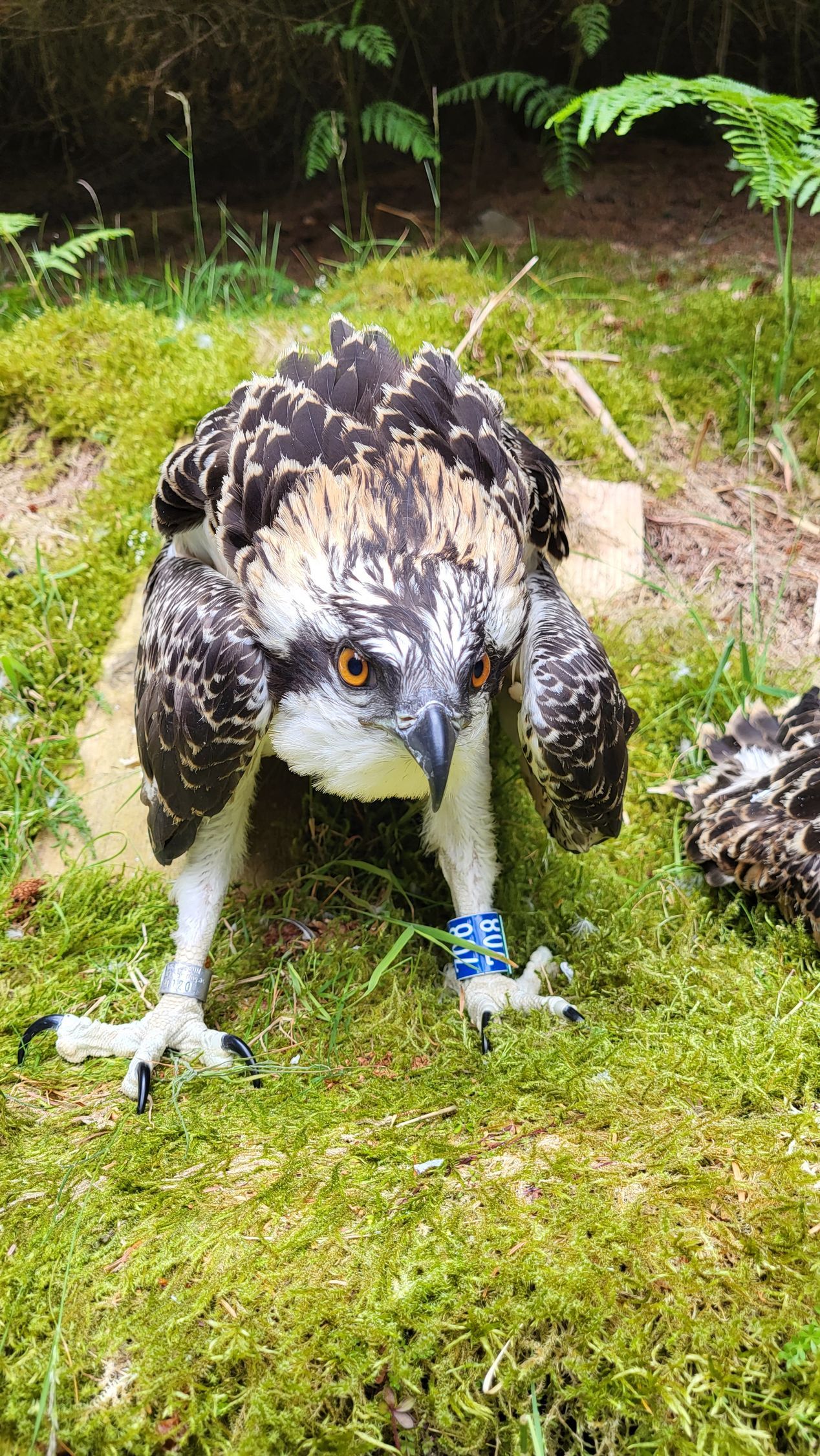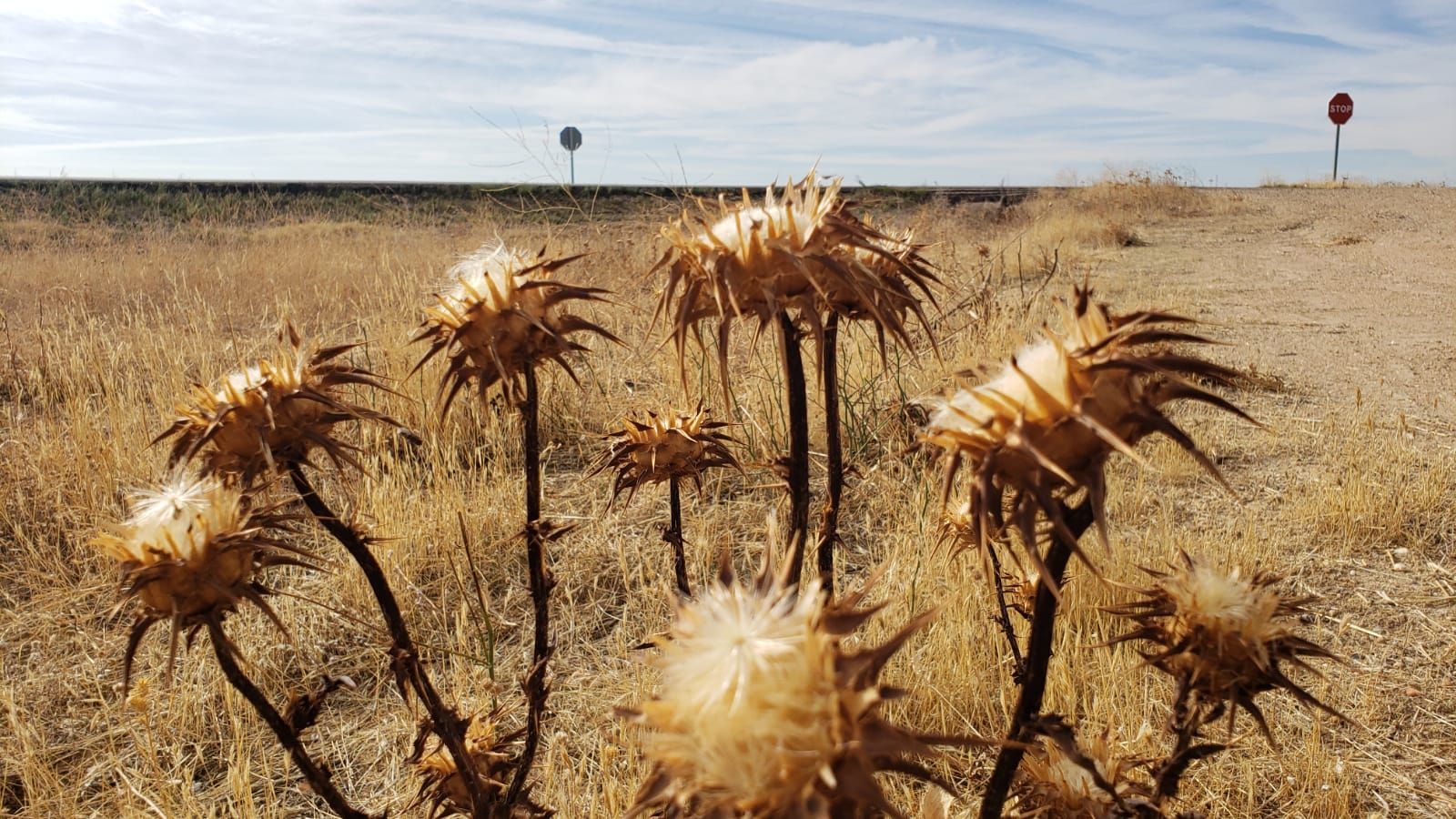The search to find hitch-hiking Osprey Glen
The Flight of the Osprey (FOTO) team have arrived in Guinea to begin their return five-week journey through West Africa and back into Europe. The team consists of Conservation Without Borders CEO Sacha Dench, cameramen Poul Brix and Mike Webster plus engineer Tim Hill. But, after finding tagged Osprey 4K on the first leg, will they have the same luck in finding satellite-tagged Tweed Valley Osprey Glen (Blue 708) on their way back?
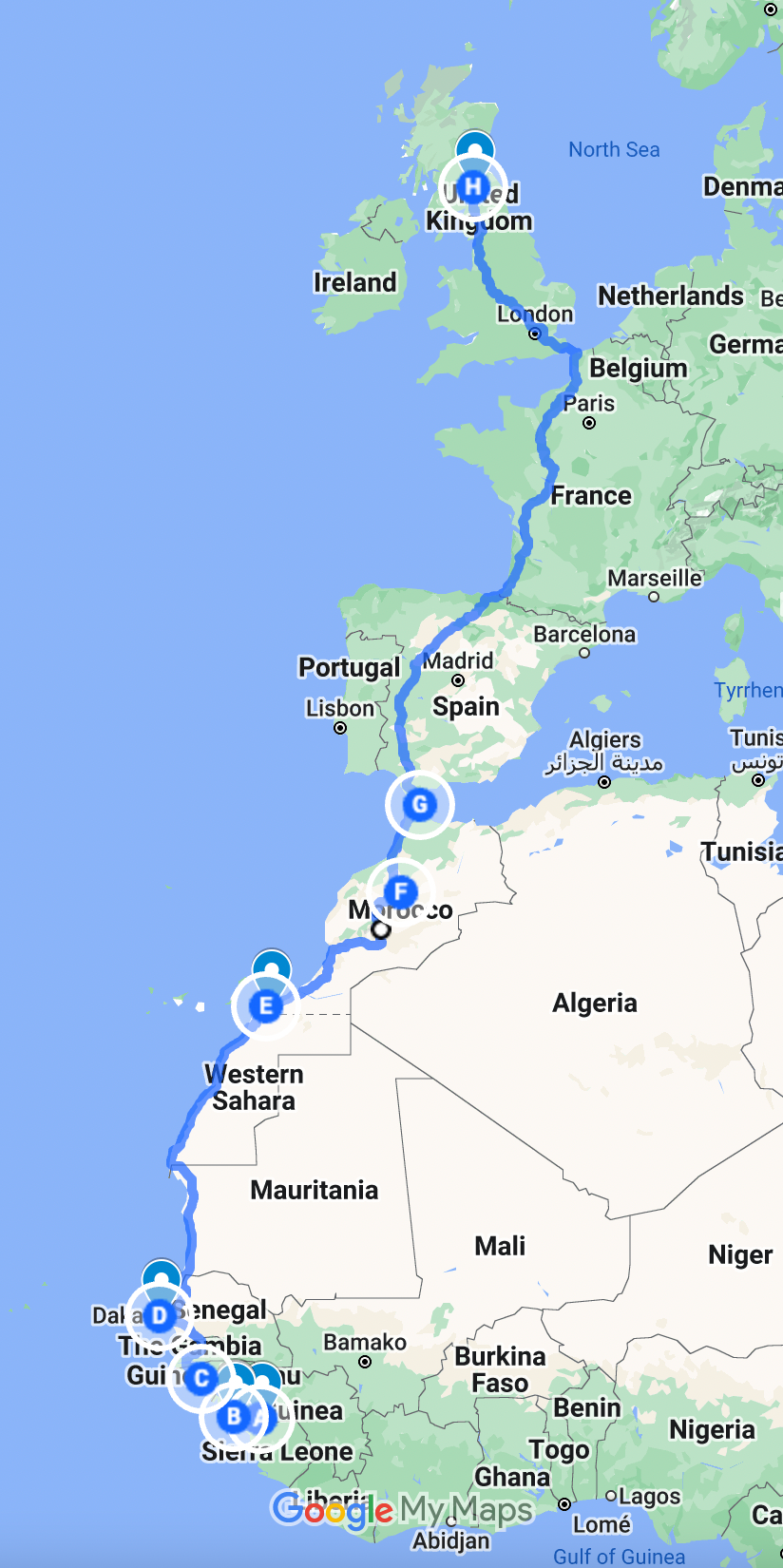
Last year, on a cold December day, Sacha, Poul and Tim landed in the UK, jubilant from finding Blue 4K at his winter home on the Pongo river in Guinea. Blue 4K is a mature male Osprey from Belvoir Castle, Rutland, hatched in 2013 and satellite-tagged in 2018. He has made the return journey several times and always over-winters in the same area but they had an arduous journey among the mangroves to try and find him.
It was a trip that consisted of 10 countries, many thousands of miles, multiple car breakdowns, and several painful blister beetle bites. Now in March, as the wintering Ospreys start arriving at their summer homes, the FOTO team begin their own return journey, from Guinea to the UK. A key focus of this journey will be to see if they can find Glen, a juvenile who left his nest in early September on his first migration at only a few months old.
He has since gone on to become quite the celebrity, having made global headlines with his migration escapes. At one point it was feared he had died. But the truth was stranger than fiction. The radio silence was because his satellite was out of range, as he had hitchhiked on not just one, but two ships, across the Bay of Biscay to Spain.
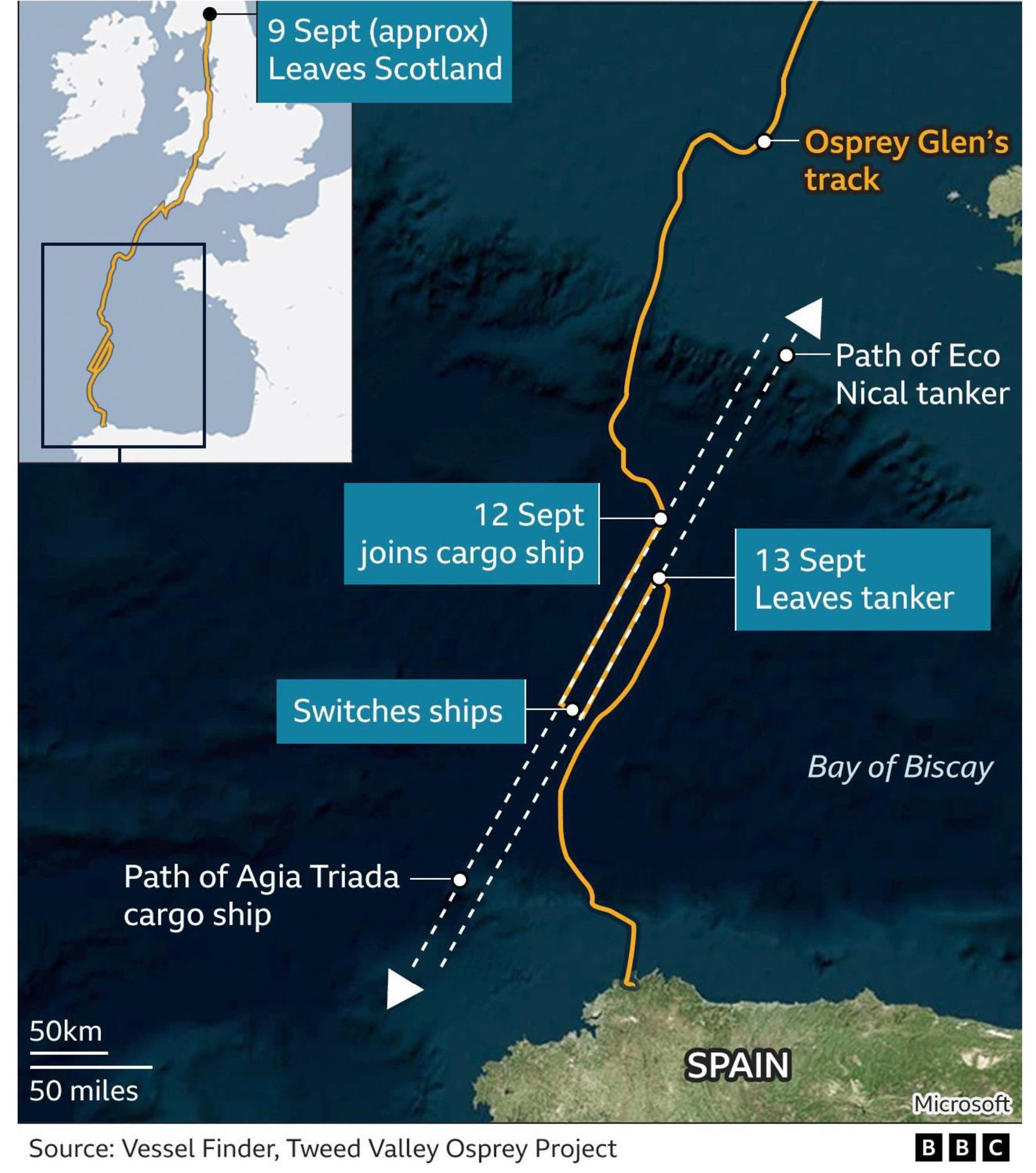
After a short rest in Europe, he vanished again from his roost in Portugal, causing concern as his satellite tag stopped transmitting. The Portuguese police were called in to assist as the data showed he was stationary on the roof of a fruit packing plant near the coast, but found no sign of him.
A few days later, he popped up in Morocco! Again the radio silence was due to being out of range as Glen had taken the long way round, flying hundreds of kilometres nonstop, curving south-west out over the Atlantic before swinging back south-east, just missing the Canary Islands, and landing on the Moroccan coast. He’s currently spending his time fishing and roosting near where he first made landfall in Morocco.
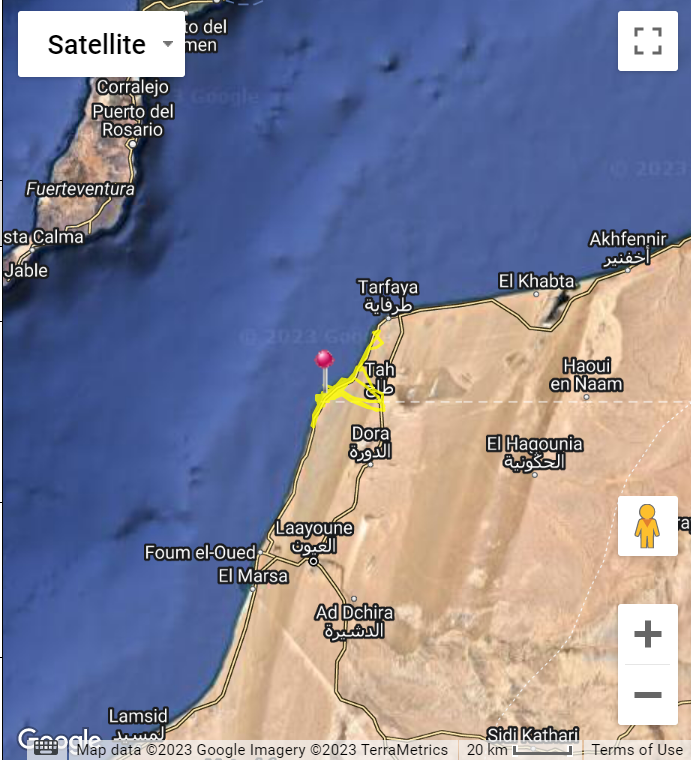
But we want to find out more than just what the satellite tells us. While satellites can give brilliant information, there is nothing quite like being on the ground and seeing it for yourself.
“We really want to go and find Glen in the middle of the desert and try and figure out what he is doing, why he decided to stay there and whether we think he has found a good situation and is safe. We also want to speak to some of the locals about him and his journey,” Sacha said.
Glen was one of three tagged juvenile ospreys from
Tweed Valley, Scotland. Unfortunately, his two siblings Tweed and Kirk did not survive, with Kirk thought to have been killed by poor weather over the Atlantic and Tweed predated by a Goshawk in Portugal. The statistics show that only one in three juvenile Ospreys survive their first year, and sadly this proved to be the case with the Tweed Valley brothers.
“We will stop where he is spending his time and try to get some footage. I was with Glen when he was tagged and I secretly hope he will come to say hi,” said Poul.
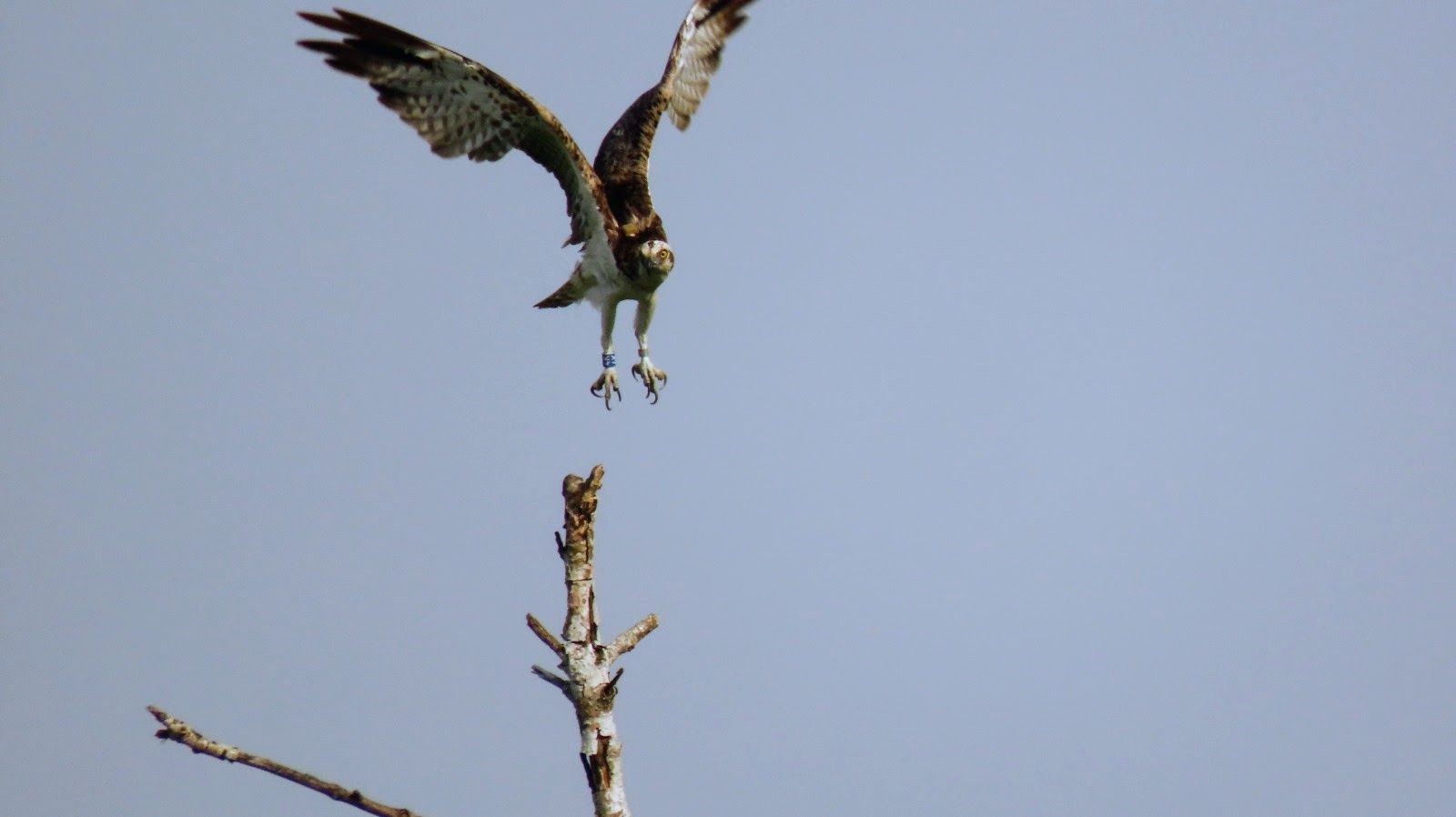
On the first part of the expedition, the team managed to track down tagged male Osprey 4K, while he was in his winter home in Guinea. He is now due to return to the UK. In previous years, 4K began his return migration between the 21st and 27th of March and arrived back in the UK around 12-14th April.
Unfortunately, as of the end of February, 4K’s tracker has stopped providing a signal, so we will not be able to track his return. Tim Mackrill, who was part of the project tagging him, said that while we would not know for sure until 4K returns, the most likely explanation for no signal is that the tag has failed. The average lifespan of the tags is around 5 years, although some can last as long as 10 years.
“By the time we get going, there is a high chance 4K will already be back in the UK. But, without the satellite tag it would be wonderful to hear from the community if he’s been spotted along the way,” Poul said.
Keen photographers along the migration route are encouraged to capture clear shots of any birds with coloured ID leg bands. Known as Darvic rings, they are designed to be read from a distance through a scope or binoculars, and all sightings are reported to the Roy Dennis Foundation.
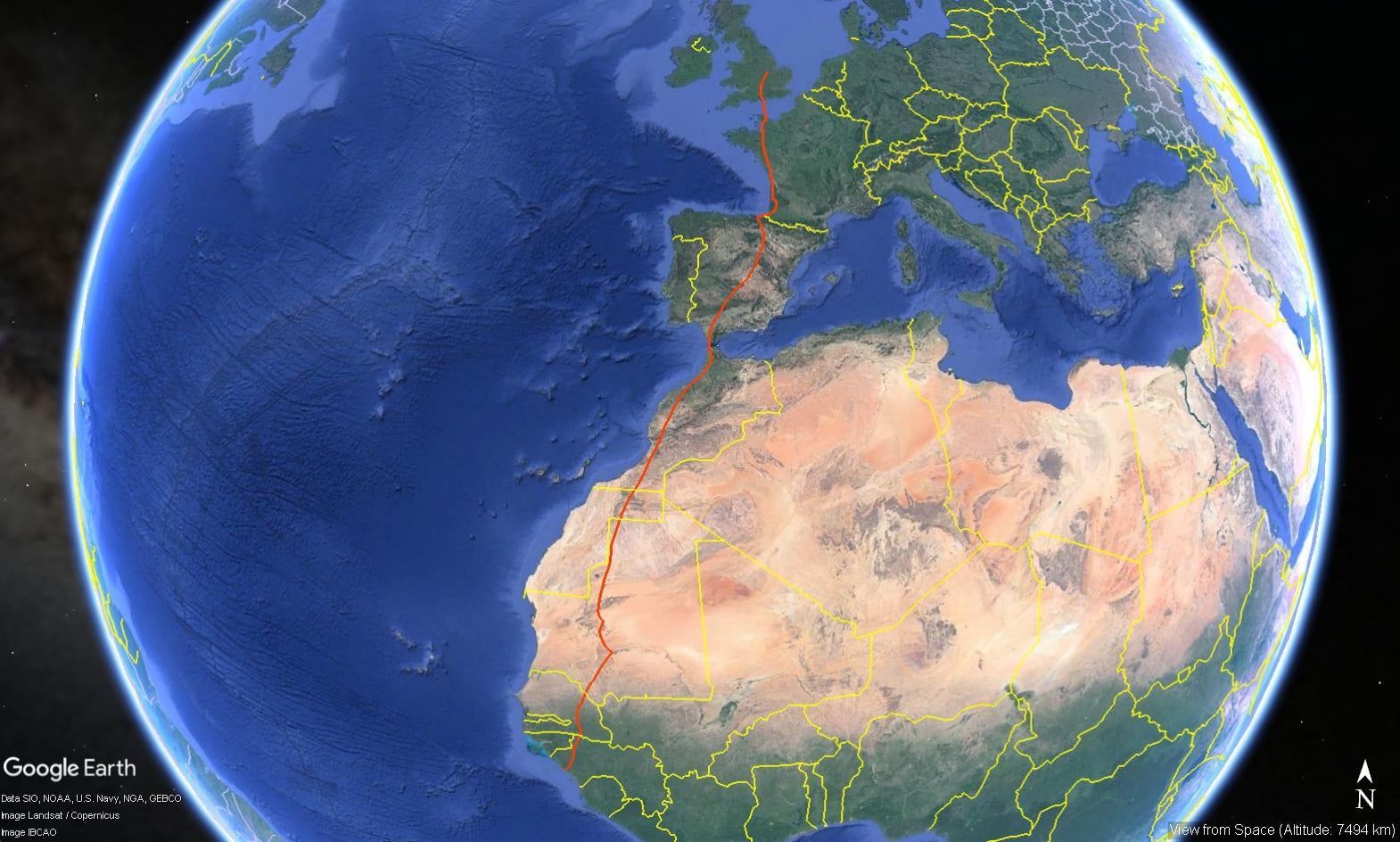
Insights and Impact
Alongside the search for Glen, the team will be focusing on gathering insights into the conditions juveniles face. Juvenile Ospreys migrating south for the first time stay the first two years in their wintering areas and return in the third spring, although some return as two year olds.
The team will also have a specific focus on climate change and the impact this is having not only on birds, but other wildlife and humans too. On the previous trip, the team uncovered 38 different threats to ospreys, most of which are exacerbated by climate change.
A large number were unintended consequences of humans. For example, we need wind turbines and renewable energy, but that vast power network is a challenge for birds, unless we design and manage with birds in mind, many are killed by the blades or electrocuted on power lines.
Extreme weather is also providing huge obstacles. “Wildfires are not only damaging habitats but are also making a physical smoke and flame block to migration. Droughts cause increases in the concentrations and toxicity of water and that, combined with mining effluent, causes mass fish kills. This became a double fish kill as the first lot of dead fish sucked all the oxygen from the river resulting in mass die-off in the River Oder last year, wiping out 75% of the fish” Sacha said.
The extreme weather conditions are also creating complications for Ospreys caring for their young on the nest, with females struggling to protect their young during extreme rains. “These are some tangible examples of what the more extreme weather, caused by climate change, means for birds,” said Sacha.
Poul was surprised to find
helicopters in France spraying bacteria to kill mosquitoes over a protected wetland during peak migration period.
For tourist comfort, they kill the mosquitoes, which are the base of the food chain for the very wildlife the tourists have come to see. Tourism is a key part of the economy. No mosquitoes mean no food for wildlife. No wildlife means no tourists.
“I’m fairly sure there will be more threats discovered as some of the partners we spoke to on the first leg of the expedition have had time to think about it,” he added.
People Power
The team will also be speaking with people about possible solutions. In some cases regarding the direct threats to ospreys, but in other cases about the systemic threats that might have a long-term impact on conservation.
“One of my favourite things about this expedition is meeting incredible people but also being able to create a much more detailed picture. It is one thing to imagine it by looking at it on a map, reading papers, and talking to a few people. It is a very different thing to have been there yourself, to see the sights. And, while it makes the picture much more complicated, it also means the solutions you come up with are much more likely to work, and to work in the long term,” Sacha said.
“It is a privilege to meet and work with a huge variety of people, from French students to African village chiefs. There's the ‘simplicity’ of life on the road, and the sense of adventure you get from a 5-month road trip. It’s also satisfying to get the opportunity to work with CWB and actively help to work against climate change,” Poul said.
Engineer Tim added that there will be challenges in keeping vehicles and tech kit going in remote areas, which means the team have to make use of whatever resources they can get hold of.
"So far, everywhere we have been, the locals have been very resourceful and have gone out of the way to help us," he said.
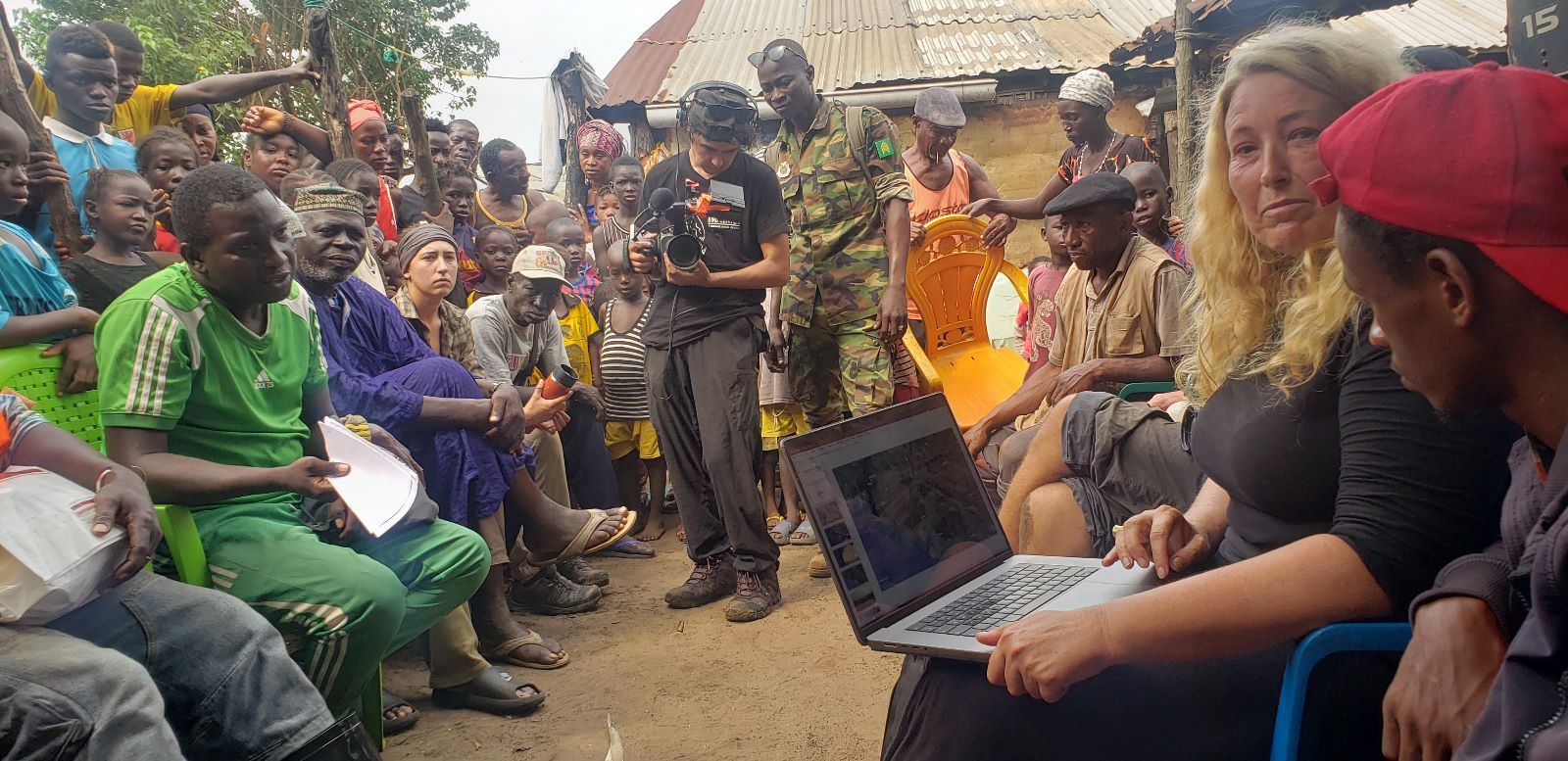
Mass Awareness
The first expedition was covered by BBC Radio 4 in a 10-part series which proved so popular to audiences that it was repeated twice. The show exposed a whole new audience to the incredible journeys migratory birds undertake, and the threats they face. It also racked up multiple print and online publications – reaching more than a billion people.
“I have been delighted but not so surprised [by the positive feedback]. The antics and the challenges of the migration, read like a script for a James Bond film. If you can imagine so many threats and having to do a journey of that distance every year, in a world that is changing fast, it makes sense that the journeys will be very difficult, but also make for very gripping adventures,” said Sacha.
On this return journey people will be able to follow online via our socials but also reports on Sky News, in the media and specific reports for the Climate Show.
Upon the team’s return, Conservation Without Borders will be making a film which should support organisations and individuals all along the flyway with their ongoing efforts. And, we hope, provide a gripping story for broadcast TV. It will tell a story of drama, intrigue and huge challenges, but also hope and inspiration for the future.
“We would like to highlight the roles of how the private sector can, and should be, way more involved. We will reveal that following a bird migration is also following supply chains. And what we put in our supermarket trolley can help define the fate of the Ospreys and other well-loved migratory birds,” Sacha said.
We will also be looking at creating an educational programme for use along the flyway, to encourage and empower the younger generation, more details to come.
How to Support
Now we’ve identified some of the challenges we need to fund the ongoing work, and we’re looking for individuals and organisations who want to contribute something or want to become more involved through our new Patrons programme.
Financial support allows us to continue turning research into action on the big issues, both in public and behind the scenes. It helps us to support a global network of organisations and individuals working on protecting migratory species. It also allows us to go on unique expeditions to create powerful stories to bring the challenges of migratory species into the public domain.
“I have been amazed and delighted by the way people have responded to us and helped get and keep the expedition on the road,” said Sacha.
To keep up with all the twists and turns of this journey, follow our socials:
Facebook,
Instagram,
Twitter,
YouTube,
LinkedIn and our
Newsletter.
If you would like to join the team, we currently have volunteer opportunities available on the
website - we look forward to hearing from you.
